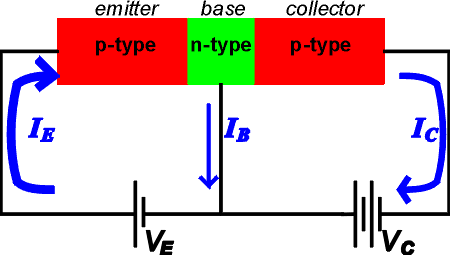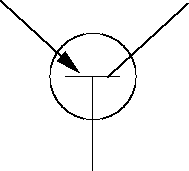
Transistors
Transistors are the crucial basic element in modern electronics. They serve as amplifiers in audio and video equipment, and as a electronic switches in computers. The basic principle is that a single transistor can control an output current according to small changes in the input, just as a light switch can control hundreds of watts power at the flick of a finger.
A pnp transistor is constructed by sandwiching a thin layer of n-type semiconductor between two segments of p-type material.

 Thus a small change in the voltage
VE creates a large effect in the
output current IC.
As described, the transistor can serve as either a switch or an amplifier. The circuit diagram for the transistor is shown on the
right. The upper left lead represents the emitter, the upper right lead represents the
collector and the lower lead is the base.
Thus a small change in the voltage
VE creates a large effect in the
output current IC.
As described, the transistor can serve as either a switch or an amplifier. The circuit diagram for the transistor is shown on the
right. The upper left lead represents the emitter, the upper right lead represents the
collector and the lower lead is the base.